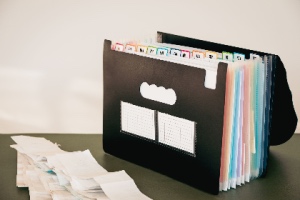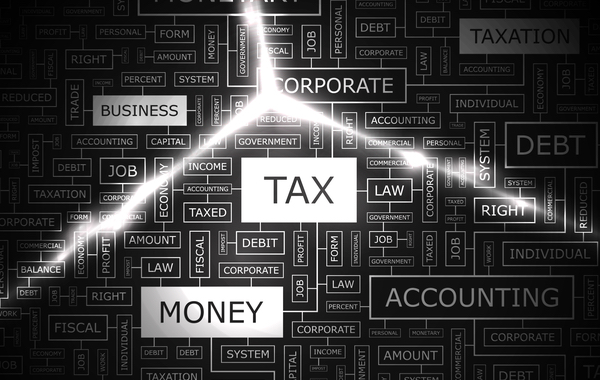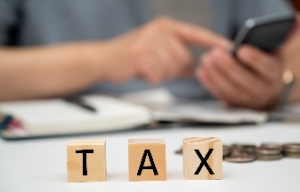Learn how to organize receipts for taxes to help streamline your financial records and maximize your potential tax deductions.
More...
Tackling the complexities of taxes can feel daunting, particularly when juggling a mountain of receipts.
However, you can turn this daunting task into a manageable routine with the right strategies.
Imagine having all your financial records at your fingertips, ready to maximize your potential tax deductions.
This post will guide you through practical tips and effective methods to streamline your receipt organization process.
Following these steps will save time and reduce stress during tax season. Stay tuned as we explore how to organize receipts for taxes.
Learning How to Organize Receipts for Taxes Effectively
Organizing tax receipts can save you time and stress during tax season. To organize receipts efficiently, start by categorizing them.
Initially, sort your receipts into business expenses, travel, office supplies, medical costs, and charitable donations.
Afterward, organize your receipts using clearly labeled folders or digital apps, ensuring everything is in place. This approach simplifies finding specific receipts when necessary.
Subsequently, it would help if you established a regular schedule for organizing these receipts. Dedicate time each week or month to reviewing and updating your records, making sure you properly document all receipts.
To further streamline the process, utilize apps or software designed for receipt management. These tools can help you scan, store, and categorize receipts efficiently.
Additionally, ensure each receipt is legible and complete. Scan paper receipts to create digital copies, reducing clutter and the risk of losing essential documents.
Continuously update your system regularly throughout the year to avoid a last-minute scramble.
Ultimately, stay organized to simplify tax filing and maximize deductions. For more tips, check out our 25 Ways to Reduce Your Tax Liability post.
Understanding the Importance of Receipt Organization for Taxes
How to organize your receipts for tax season is crucial for accurate tax filing. Proper receipt organization minimizes errors and maximizes deductions.
By maintaining a systematic approach, you ensure compliance with IRS guidelines. This strategy not only saves time but also reduces stress during tax season.
Moreover, organized receipts can serve as essential proof in case of audits.
Therefore, understanding the importance of receipt organization is the first step toward a hassle-free tax season.
Header | 10 Tips on How to Organize Receipts for Taxes |
|---|---|
1 | Categorize receipts by expense type |
2 | Use labeled folders or digital apps |
3 | Schedule regular receipt reviews |
4 | Scan paper receipts for digital copies |
5 | Ensure receipts are legible and complete |
6 | Utilize receipt management software |
7 | Separate business and personal expenses |
8 | Keep receipts for at least three years |
9 | Avoid last-minute receipt organization |
10 | Review categorized receipts before filing |
Choosing the Right Tools and Software for Receipt Management
Selecting suitable tools and software is vital in organizing receipts for tax season.
Numerous applications offer features like scanning, categorizing, and storing receipts digitally.
For instance, apps such as Expensify and Neat can streamline the process.
Additionally, cloud-based solutions provide easy access and backup options.
By choosing the right tools, you enhance efficiency and accuracy in your receipt management process, helping you to unlock savings now.
Master Receipt Organization for Stress-Free Tax Season
Effectively categorizing receipts is a crucial aspect of organizing them for tax season. Initially, start by dividing them into business and personal expenses.
Then, create subcategories like travel, meals, office supplies, etc. Label each receipt accordingly and store them in designated folders or digital files.
Consistent categorization simplifies tracking and retrieval during tax preparation. As a result, you will find the process much more manageable.
Choosing Between Digital and Physical Receipts for Taxes
When deciding how to organize your receipts for taxes, consider the pros and cons of digital versus physical receipts.
Digital receipts are easy to store, search, and share but require reliable technology and backup systems.
On the other hand, physical receipts are tangible but can be easily lost or damaged.
You can determine the best method for your needs by weighing these factors.
Creating a Filing System That Works for You
A personalized filing system is essential for organizing receipts for tax season.
Consistency is critical regardless of whether you prefer digital folders or physical binders.
Ensure that each category is clearly labeled and regularly updated to maintain order.
Consequently, a well-organized filing system facilitates quick access to necessary documents during tax preparation.
Tips for Keeping Track of Business vs. Personal Expenses
Distinguishing between business and personal expenses is fundamental in organizing your receipts for tax season.
First, use separate accounts or credit cards for business transactions to ensure everything is clear.
As a best practice, periodically review your expenses to ensure accurate categorization.
Interestingly, this practice not only aids in tax preparation but also provides a clear financial overview.
Moving on to another crucial aspect, consulting a tax expert can significantly impact your financial planning.
With this in mind, weigh the benefits and drawbacks of professional tax assistance to make an informed decision.
How Long Should You Keep Your Receipts?
Knowing how long to keep receipts is part of organizing your receipts for tax season.
Typically, keep them for at least three years from the date you filed your return or two years from when you paid the tax, whichever is later.
In the case of significant purchases or deductions, consider keeping them longer.
Common Mistakes to Avoid When Organizing Receipts
Avoiding common mistakes enhances how you organize your receipts for tax season.
To begin with, take your time; regular updates prevent last-minute chaos. Ensure all receipts are legible; faded print can lead to issues during audits.
Equally important, only mix personal and business expenses with proper documentation.
Understanding how to organize receipts for taxes can save you time and stress.
Proper organization extends beyond business expenses. (Tracking charitable contributions can yield substantial tax benefits while supporting worthy causes.)
Leveraging Apps and Technology for Efficient Receipt Management
Using apps and technology can revolutionize how you organize your receipts for tax season.
For instance, apps like QuickBooks offer features tailored for freelancers and small businesses.
These applications automate expense tracking and integrate with accounting software, ensuring seamless receipt management throughout the year.
Preparing Your Receipts for a Smooth Tax Filing Experience
Proper preparation ensures a smooth experience organizing your receipts for tax season.
Review all categorized receipts before submission to ensure completeness and accuracy.
By understanding how to organize receipts for taxes, you can simplify the entire process.
Consider using checklists provided by your accountant or online resources as guides. With organized preparation, you can prevent delays and potential errors during filing.
In the Final Analysis
Mastering how to organize receipts for taxes is a pivotal step towards stress-free tax preparation and maximizing your deductions.
First, you streamline the entire process by systematically categorizing receipts, utilizing digital tools, and maintaining regular updates.
In doing so, this approach saves you time, ensures compliance with IRS guidelines, and provides essential proof in case of audits.
It's important to note that the key to successful receipt management lies in consistency and diligence.
As tax season nears, an organized system will make filing your taxes smoother and more efficient.
Therefore, embrace these strategies now to pave the way for hassle-free financial management in the future.
By continually applying these strategies year-round, you can streamline the procedure, adhere to IRS guidelines, and optimize your potential deductions.
Ultimately, when tax season arrives, you'll find yourself well-prepared with minimal stress, ready to file accurately and efficiently.




